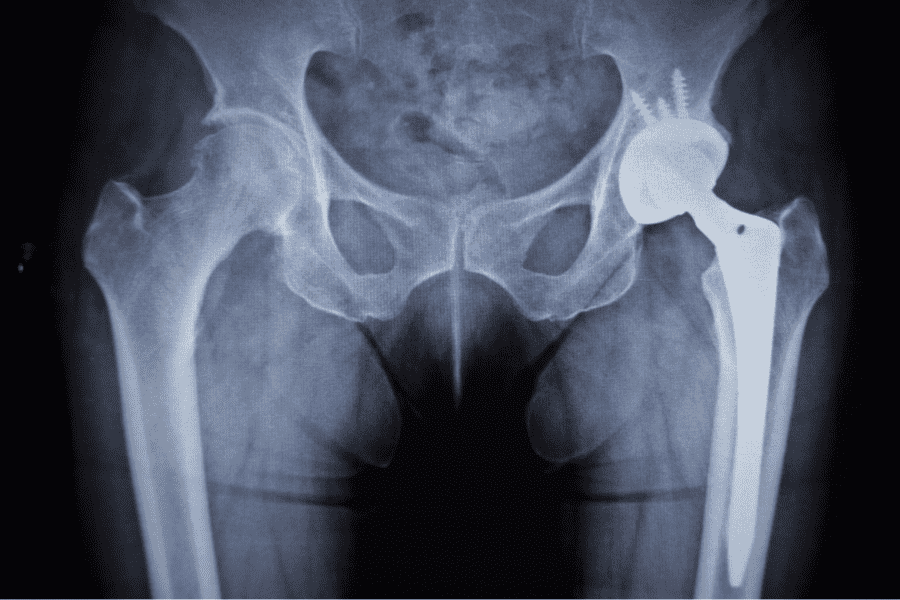- What are the Common Symptoms Leading to a Hip Replacement?
- How Does Pain in the Thigh Indicate Hip Problems?
- What is the Process of Getting an Anterior Hip Replacement?
- What Should You Expect During Recovery from Hip Replacement Surgery?
- How Does Life Change Post-Hip Replacement Surgery?
Over time, hip pain worsens and leads to a loss of mobility. The ability to walk and go home on the same day was important for Jeffrey Nichols, who had suffered for many years with debilitating, chronic pain in his hips. Travis Clegg, M.D., a board-certified orthopedic surgeon specializing in minimally invasive hip hip surgery, performs an anterior approach hip replacement that allows patients to walk within hours after surgery.
“Dr. Clegg’s got me back up and moving, and I feel physically better than I have in a long time,” says Nichols, after recovering from anterior hip replacement surgery.
Anterior hip replacement is a significant medical intervention that has transformed the lives of many who suffer from severe hip pain and mobility issues. Are you experiencing pain in your hips and thighs? Hip replacement may be the answer. Watch Jeffrey’s story and learn more about this minimally invasive procedure that could help your hips move pain-free.
What are the Common Symptoms Leading to a Hip Replacement?
 Hip replacement becomes a consideration when individuals experience chronic hip pain, stiffness, and reduced mobility, significantly impairing daily activities. These symptoms are often due to conditions like osteoarthritis, rheumatoid arthritis, or traumatic injuries, which lead to the deterioration of the hip joint.
Hip replacement becomes a consideration when individuals experience chronic hip pain, stiffness, and reduced mobility, significantly impairing daily activities. These symptoms are often due to conditions like osteoarthritis, rheumatoid arthritis, or traumatic injuries, which lead to the deterioration of the hip joint.
- Chronic Hip Pain: Persistence and intensity of pain often lead to considering surgery.
- Mobility Issues: Stiffness and limitations in movement signal the need for a hip replacement.
- Other Pain: You may experience pain in your back and down your thigh, limiting your movement even further.
These are all signs that you could benefit from hip replacement surgery, but to know what would help, patients must undergo further tests and scans, including an MRI. Talk with Dr. Clegg about these symptoms and mobility issues so that imaging can be requested, which will speed up your diagnosis and treatment.
How Does Pain in the Thigh Indicate Hip Problems?
 Pain radiating down the thigh is a common symptom of hip joint problems. This pain, often felt in the groin area and extending to the knee, indicates that the hip joint may be deteriorating or inflamed. Such pain patterns warrant a thorough evaluation for potential hip replacement.
Pain radiating down the thigh is a common symptom of hip joint problems. This pain, often felt in the groin area and extending to the knee, indicates that the hip joint may be deteriorating or inflamed. Such pain patterns warrant a thorough evaluation for potential hip replacement.
Pain like this severely limits your ability to move and perform normal activities. A recent patient of Dr. Clegg experienced this exact pain and went to his primary doctor, who referred him to a hip specialist. Jeffrey had reached a point where mobility became a significant challenge, leading to his decision to undergo hip replacement surgery.
He said, “I got to a point where I just couldn’t get around. I don’t know how else to put it. Dr. Clegg got me back up and moving, and I feel physically better than I have in a long time.”
His story highlights the transformative impact of anterior hip replacement surgery in relieving pain and restoring quality of life.
What is the Process of Getting an Anterior Hip Replacement?
Many prefer the anterior hip replacement procedure due to its minimally invasive approach. This technique involves a front-of-hip incision, allowing surgeons to access the joint without cutting through major muscles. This results in less tissue damage, leading to a faster recovery, reduced pain post-surgery, and a quicker return to normal activities. Its minimally invasive nature makes it an increasingly popular choice for hip replacement surgeries.
What Should You Expect During Recovery from Hip Replacement Surgery?
 Recovery from hip replacement surgery involves a combination of rest, pain management, and physical therapy. However, recovery is much faster and less painful with anterior approach hip replacement.
Recovery from hip replacement surgery involves a combination of rest, pain management, and physical therapy. However, recovery is much faster and less painful with anterior approach hip replacement.
Initially, patients may experience discomfort and limited mobility, but physical therapy is necessary to regain strength and range of motion.
Patients typically start with gentle exercises, gradually progressing to more challenging activities, focusing on improving joint function and preventing complications.
How Does Life Change Post-Hip Replacement Surgery?
Many patients experience a dramatic reduction in pain and significant improvement in their ability to perform daily activities after a hip replacement. While lifestyle adjustments and certain precautions are necessary to protect the new hip, most individuals return to a more active lifestyle, free from the debilitating pain that once stopped them.
Don’t Limit Your Life Due to Hip Pain
Anterior hip replacement restores someone with chronic pain and limited mobility to a renewed sense of freedom and activity. It addresses the physical aspects of hip deterioration and significantly improves overall well-being.
Jeffrey Nichols’ experience exemplifies the transformation many patients undergo, emerging with a newfound ability to enjoy life’s daily activities. If you’re experiencing persistent hip-related pain, especially with discomfort extending down the thigh, schedule a consultation with Dr. Clegg and get back to living life.
